Influence of MWCNT Concentration on Performance of Nylon/MWCNT Nanocomposite-Based Triboelectric Nanogenerators Fabricated via Spin Coating Method
Abstract
1. Introduction
2. Materials and Methods
2.1. Materials
2.2. Functionalization of MWCNTs and Preparation of Ethanol/MWCNT Mixtures with Varying Concentrations
2.2.1. Functionalization Process
2.2.2. Preparation of Ethanol/MWCNT Mixtures
2.3. Fabrication of Nylon/MWCNT Nanocomposites by Using Spin Coating Method
2.4. Fabrication of Triboelectric Films for TENG
2.5. Characterization Methods
2.6. Measurement of the Performance of the TENG
3. Results and Discussion
3.1. XRD Analysis
3.2. SEM and EDS Analysis
3.3. FTIR Spectroscopy Analysis
3.4. Dielectric Measurements of the Films
3.5. Output Parameters of TENG
4. Conclusions
Author Contributions
Funding
Data Availability Statement
Acknowledgments
Conflicts of Interest
References
- Liu, L.; Guo, X.; Liu, W.; Lee, C. Recent progress in the energy harvesting technology—From self-powered sensors to self-sustained IoT, and new applications. Nanomaterials 2021, 11, 2975. [Google Scholar] [CrossRef]
- Liu, H.; Fu, H.; Sun, L.; Lee, C.; Yeatman, E.M. Hybrid energy harvesting technology: From materials, structural design, system integration to applications. Renew. Sustain. Energy Rev. 2021, 137, 110473. [Google Scholar] [CrossRef]
- Walden, R.; Kumar, C.; Mulvihill, D.M.; Pillai, S.C. Opportunities and challenges in triboelectric nanogenerator (TENG) based sustainable energy generation technologies: A mini-review. Chem. Eng. J. Adv. 2022, 9, 100237. [Google Scholar] [CrossRef]
- Dassanayaka, D.G.; Alves, T.M.; Wanasekara, N.D.; Dharmasena, I.G.; Ventura, J. Recent progresses in wearable triboelectric nanogenerators. Adv. Funct. Mater. 2022, 32, 2205438. [Google Scholar] [CrossRef]
- Kim, J.; Gulahmadov, O.; Muradov, M.B. Enhancement of performance of triboelectric generators by introduction of micro- and nano-structures on triboelectric films. J. Mater. Sci. Mater. Electron. 2021, 32, 24661–24680. [Google Scholar] [CrossRef]
- Pu, X.; Zhang, C.; Wang, Z.L. Triboelectric nanogenerators as wearable power sources and self-powered sensors. Nat. Sci. Rev. 2023, 10, nwac170. [Google Scholar] [CrossRef] [PubMed]
- Gulahmadov, O.; Muradov, M.B.; Kim, J. Gait analysis by using electric signals from a triboelectric nanogenerator. Eng. Res. Express 2022, 4, 035027. [Google Scholar] [CrossRef]
- Babu, A.; Aazem, I.; Walden, R.; Bairagi, S.; Mulvihill, D.M.; Pillai, S.C. Electrospun nanofiber based TENGs for wearable electronics and self-powered sensing. Chem. Eng. J. 2023, 452, 139060. [Google Scholar] [CrossRef]
- Vahidhosseini, S.M.; Rashidi, S.; Ehsani, M.H. Efficient energy harvesting using triboelectric nanogenerators (TENGs): Integration with technologies, wearable applications, and future trends. Renew. Sustain. Energy Rev. 2025, 216, 115662. [Google Scholar] [CrossRef]
- Gulahmadov, O.; Muradov, M.B.; Gahramanli, L.; Karimova, A.; Mammadayarova, S.; Bellucci, S.; Musayev, A.; Kim, J. Development of Nylon/Fe3O4 nanocomposite triboelectric nanogenerators for self-powered transmission line monitoring applications. Energy Environ. Mater. 2023, 8, e12880. [Google Scholar] [CrossRef]
- Chang, A.; Uy, C.; Xiao, X.; Chen, J. Self-powered environmental monitoring via a triboelectric nanogenerator. Nano Energy 2022, 98, 107282. [Google Scholar] [CrossRef]
- Ou-Yang, W.; Liu, L.; Xie, M.; Zhou, S.; Hu, X.; Wu, H.; Tian, Z.; Chen, X.; Zhu, Y.; Li, J. Recent advances in triboelectric nanogenerator-based self-powered sensors for monitoring human body signals. Nano Energy 2024, 120, 109151. [Google Scholar] [CrossRef]
- Wu, J.; Zheng, Y.; Li, X. Recent progress in self-powered sensors based on triboelectric nanogenerators. Sensors 2021, 21, 7129. [Google Scholar] [CrossRef]
- Mao, Y.; Zhu, Y.; Zhao, T.; Jia, C.; Wang, X.Y. Portable mobile gait monitor system based on triboelectric nanogenerator for monitoring gait and powering devices. Energies 2021, 14, 4996. [Google Scholar] [CrossRef]
- Supraja, P.; Kumar, R.R.; Mishra, S.; Haranath, D.; Sankar, P.R.; Prakash, K.; Jayarambabu, N.; Rao, T.V.; Kumar, K.U. A simple and low-cost triboelectric nanogenerator based on two-dimensional ZnO nanosheets and its application in portable electronics. Sens. Actuators A Phys. 2022, 335, 113868. [Google Scholar] [CrossRef]
- Li, M.; Cheng, W.-Y.; Li, Y.-C.; Wu, H.-M.; Wu, Y.-C.; Lu, H.-W.; Cheng, S.-L.; Li, L.; Chang, K.-C.; Liu, H.-J.; et al. Deformable, resilient, and mechanically-durable triboelectric nanogenerator based on recycled coffee waste for wearable power and self-powered smart sensors. Nano Energy 2021, 79, 105405. [Google Scholar] [CrossRef]
- Elvira-Hernández, E.A.; Nava-Galindo, O.I.; Martínez-Lara, E.K.; Delgado-Alvarado, E.; López-Huerta, F.; De León, A.; Gallardo-Vega, C.; Herrera-May, A.L. A portable triboelectric nanogenerator based on dehydrated nopal powder for powering electronic devices. Sensors 2023, 23, 4195. [Google Scholar] [CrossRef]
- Wang, Y.; Li, Z.; Fu, H.; Xu, B. Sustainable triboelectric nanogenerators based on recycled materials for biomechanical energy harvesting and self-powered sensing. Nano Energy 2023, 115, 108717. [Google Scholar] [CrossRef]
- Torres, F.G.; Gonzales, K.N.; Troncoso, O.P.; Corman-Hijar, J.I.; Cornejo, G. A review on the development of biopolymer nanocomposite-based triboelectric nanogenerators (Bio-TENGs). ACS Appl. Electron. Mater. 2023, 5, 3546–3559. [Google Scholar] [CrossRef]
- Roy, S.; Ghosh, B.D.; Mishra, S.; Goh, K.L.; Kim, J. Customized extrusion nozzle assisted robust Nylon 6/MWCNT nanocomposite based triboelectric nanogenerators for advanced smart wearables. Chem. Eng. J. 2024, 493, 152598. [Google Scholar] [CrossRef]
- Luo, J.; Gao, W.; Wang, Z.L. The triboelectric nanogenerator as an innovative technology toward intelligent sports. Adv. Mater. 2021, 33, 2004178. [Google Scholar] [CrossRef]
- Dhakar, L.; Gudla, S.; Shan, X.; Wang, Z.; Tay, F.E.H.; Heng, C.H.; Lee, C. Large scale triboelectric nanogenerator and self-powered pressure sensor array using low cost roll-to-roll UV embossing. Sci. Rep. 2016, 6, 22253. [Google Scholar] [CrossRef]
- Cheng, K.; Wallaret, S.; Ardebili, H.; Karim, A. Advanced triboelectric nanogenerators based on low-dimension carbon materials: A review. Carbon 2024, 194, 81–103. [Google Scholar] [CrossRef]
- Sayam, A.; Rahman, M.M.; Sayem, A.S.M.; Ahmed, A.F.; Alimuzzaman, S. Carbon-based textile-structured triboelectric nanogenerators for smart wearables. Adv. Energy Sustain. Res. 2024, 5, 2400127. [Google Scholar] [CrossRef]
- Shanbendi, M.; Ardebili, H.; Karim, A. Polymer-based triboelectric nanogenerators: Materials, characterization, and applications. Prog. Polym. Sci. 2023, 132, 101273. [Google Scholar]
- Chikwendu, O.C.; Emeka, U.C.; Onyekachi, E. The optimization of polymer-based nanocomposites for advanced engineering applications. World J. Adv. Res. Rev. 2025, 25, 755–763. [Google Scholar] [CrossRef]
- Gulahmadov, O.; Gahramanli, L.; Muradov, M.; Musayeva, N.; Gilev, J.B.; Bellucci, S. Fabricating nylon/multiwalled carbon nanotube (MWCNT) nanocomposites for potential use in triboelectric nanogenerators (TENGs). Fuller. Nanotub. Carbon Nanostruct. 2025, 33, 833–842. [Google Scholar] [CrossRef]
- Sharma, S.S.P.M.; Agarwal, A.; Chauhan, P.S.; Zirath, R.; Khemka, A. Recent advancements in materials: Nanocomposites. In Biomedical Implants; CRC Press: Boca Raton, FL, USA, 2024; pp. 24–38. [Google Scholar]
- Das, N.; Panda, S.; Das, D.K.; Nayak, S.K.; Parthasarathy, S.; Patnaik, P. Polymer nanocomposites and nanostructured polymers. In Exploring Nanomaterial Synthesis, Characterization, and Applications; IGI Global: Hershey, PA, USA, 2025; pp. 213–240. [Google Scholar]
- Lu, Y.; Chen, X.; Lan, H.; Nag, A.; Chen, Y.; Gao, J.; Deng, S. A review of multi-walled carbon nanotubes-based electrochemical sensors to detect heavy metals for food packaging applications. J. Alloys Compd. 2025, 1017, 179106. [Google Scholar] [CrossRef]
- Jalali, S.; Baniadam, M.; Maghrebi, M. Impedance analysis and dielectric performance of microwave-assisted synthesized MWCNT/polystyrene nanocomposites: Influence of microwave power. Arab. J. Sci. Eng. 2024, 50, 4283–4294. [Google Scholar] [CrossRef]
- Ani, M.H.; Zulkeflee, M.Z.; Kaderi, A.K.; Sutipto, E.G.; Salim, N. Multiwall carbon nanotubes based triboelectric nanogenerators. Mater. Sci. Forum 2022, 1056, 33–38. [Google Scholar] [CrossRef]
- Meng, L.; Xu, Q.; Dan, L.; Wang, X. Single-Walled carbon nanotube based triboelectric flexible touch sensors. J. Electron. Mater. 2019, 48, 7411–7416. [Google Scholar] [CrossRef]
- Kang, B.-C.; Choi, H.-J.; Park, S.-J.; Ha, T.-J. Wearable triboelectric nanogenerators with the reduced loss of triboelectric charges by using a hole transport layer of bar-printed single-wall carbon nanotube random networks. Energy 2021, 233, 121196. [Google Scholar] [CrossRef]
- Su, M.; Kim, B. Silk fibroin-carbon nanotube composites based fiber substrated wearable triboelectric nanogenerator. ACS Appl. Nano Mater. 2020, 3, 9759–9770. [Google Scholar] [CrossRef]
- Kim, M.K.; Kim, M.S.; Kwon, H.B.; Jo, S.E.; Kim, Y.J. Wearable triboelectric nanogenerator using a plasma-etched PDMS–CNT composite for a physical activity sensor. RSC Adv. 2017, 7, 48368–48373. [Google Scholar] [CrossRef]
- Zhang, H.; Zhang, D.Z.; Wang, D.Y.; Xu, Z.Y.; Yang, Y.; Zhang, B. Flexible single-electrode triboelectric nanogenerator with MWCNT/PDMS composite film for environmental energy harvesting and human motion monitoring. Rare Met. 2022, 41, 3117–3128. [Google Scholar] [CrossRef]
- Kumar, S.; Jha, R.K.; Thakur, B.; Biswas, T.; Anand, J.K.; Soren, C.; Banswar, D.; Singh, S.; Singh, S.; Sinha-Ray, S.; et al. Performance enhancement of triboelectric nanogenerators and exploration of tactile sensing using an electrospun PAN–MWCNT layer through interface manipulation. J. Mater. Chem. A 2025, 13, 7786–7803. [Google Scholar] [CrossRef]
- Nuthalapati, S.; Chakraborthy, A.; Arief, I.; Meena, K.K.; Kaja, K.R.; Kumar, R.R.; Kumar, K.U.; Das, A.; Altinsoy, M.E.; Nag, A. Wearable High-Performance MWCNTs/PDMS Nanocomposite based Triboelectric Nanogenerators for Haptic Applications. IEEE J. Flex. Electron. 2024, 3, 393–400. [Google Scholar] [CrossRef]
- Butt, A. Thin-film coating methods: A successful marriage of high-quality and cost-effectiveness—A brief exploration. Coatings 2022, 12, 1115. [Google Scholar] [CrossRef]
- Tyona, M.D. A comprehensive study of spin coating as a thin film deposition technique and spin coating equipment. Adv. Mater. Res. 2013, 2, 181. [Google Scholar] [CrossRef]
- Mustafa, H.A.M.; Jameel, D.A. Modeling and the main stages of spin coating process: A review. J. Appl. Sci. Technol. Trends 2021, 2, 119–123. [Google Scholar] [CrossRef]
- Shankaregowda, S.A.; Nanjegowda, C.B.; Guan, S.; Huang, J.; Li, J.; Ahmed, R.F.S.M.; Sannathammegowda, K.; Boregowda, A.M.; Wang, F.; Cheng, C. A robust triboelectric nanogenerator resistant to humidity and temperature in ambient environment. Phys. Status Solidi (RRL)–Rapid Res. Lett. 2023, 17, 2200489. [Google Scholar] [CrossRef]
- Li, J.; Zuo, Y.; Cheng, X.; Yang, W.; Wang, H.; Li, Y. Preparation and characterization of nanohydroxyapatite. J. Mater. Sci. Mater. Med. 2009, 20, 1031–1038. [Google Scholar] [CrossRef]
- Leo, C.P.; Linggawati, A.; Mohammad, A.W.; Ghazali, Z. Effects of γ-aminopropyltriethoxysilane on morphological characteristics of hybrid nylon-66-based membranes before electron beam irradiation. J. Appl. Polym. Sci. 2011, 122, 3339–3350. [Google Scholar] [CrossRef]
- Zhang, H.; Maljkovic, N.; Mitchell, B.S. Structure and interfacial properties of nanocrystalline aluminum/mullite composites. J. Mater. Sci. Eng. A 2002, 326, 317–323. [Google Scholar] [CrossRef]
- Lee, D.Y.; Lee, M.H.; Kim, K.J.; Heo, S.; Kim, B.Y.; Lee, S.J. Effect of multiwalled carbon nanotube (M-CNT) loading on M-CNT distribution behavior and the related electromechanical properties of the M-CNT dispersed ionomeric nanocomposites. Surf. Coat. Technol. 2005, 200, 1920–1925. [Google Scholar]
- Mishra, S.K.; Tripathi, S.N.; Choudhary, V.; Gupta, B.D. Surface plasmon resonance-based fiber optic methane gas sensor utilizing graphene-carbon nanotubes-poly(methyl methacrylate) hybrid nanocomposite. Plasmonics 2015, 10, 1147–1157. [Google Scholar] [CrossRef]
- Sahebian, S.; Zebarjad, S.M.; Vahdati Khaki, J.; Lazzeri, A. A study on the dependence of structure of multi-walled carbon nanotubes on acid treatment. J. Nanostruct. Chem. 2015, 5, 287–293. [Google Scholar] [CrossRef]
- Khori, N.K.E.M.; Salmiati; Hadibarata, T.; Yusop, Z. A combination of waste biomass activated carbon and nylon nanofiber for removal of triclosan from aqueous solutions. J. Environ. Treat. Tech. 2020, 8, 1036–1045. [Google Scholar]
- Gulahmadov, O.; Muradov, M.B.; Mamedov, H.; Kim, J. Enhancement of triboelectric nanogenerators with nylon/TiO2 nanocomposite films. MRS Commun. 2024, 14, 114–120. [Google Scholar] [CrossRef]
- Ren, J.; Yu, D.; Feng, L.; Wang, G.; Lv, G. Nanocable-structured polymer/carbon nanotube composite with low dielectric loss and high impedance. Compos. Part A Appl. Sci. Manuf. 2017, 98, 66–75. [Google Scholar] [CrossRef]
- Li, Y.; Luo, Y.; Deng, H.; Shi, S.; Tian, S.; Wu, H.; Tang, J. Advanced dielectric materials for triboelectric nanogenerators: Principles, methods, and applications. Adv. Mater. 2024, 36, e2314380. [Google Scholar] [CrossRef] [PubMed]
- Afsarimanesh, N.; Nag, A.; Alahi, M.E.E.; Sarkar, S.; Mukhopadhyay, S.; Sabet, G.S.; Altinsoy, M.E. A critical review of the recent progress on carbon nanotubes-based nanogenerators. Sens. Actuators A Phys. 2022, 344, 113743. [Google Scholar] [CrossRef]
- Le, D.Q.B. Micromachining of Carbon Nanofiller Reinforced Polymer Nanocomposites. Ph.D. Thesis, University of Northumbria, Newcastle, UK, 2021. [Google Scholar]
- Lee, K.; Han, H.; Ryu, J.H.; Kang, S.; Jung, K.; Kim, Y.K.; Song, T.; Mhin, S.; Kim, K.M. Laser-driven formation of ZnSnO3/CNT heterostructure and its critical role in boosting performance of the triboelectric nanogenerator. Carbon 2023, 212, 118120. [Google Scholar] [CrossRef]
- Mucha, M.; Krzyzak, A.; Kosicka, E.; Coy, E.; Kościński, M.; Sterzyński, T.; Sałaciński, M. Effect of MWCNTs on wear behavior of epoxy resin for aircraft applications. Materials 2020, 13, 2696. [Google Scholar] [CrossRef]
- Sharma, R.; Sasikumar, C.; Baral, J. Wear behaviour of Al-MWCNT composites by varying MWCNTs concentration. J. Alloys Metall. Syst. 2024, 7, 100104. [Google Scholar] [CrossRef]
- Wu, Y.; Dong, C.; Yuan, C.; Bai, X.; Zhang, L.; Tian, Y. MWCNTs filled high-density polyethylene composites to improve tribological performance. Wear 2021, 477, 203776. [Google Scholar] [CrossRef]
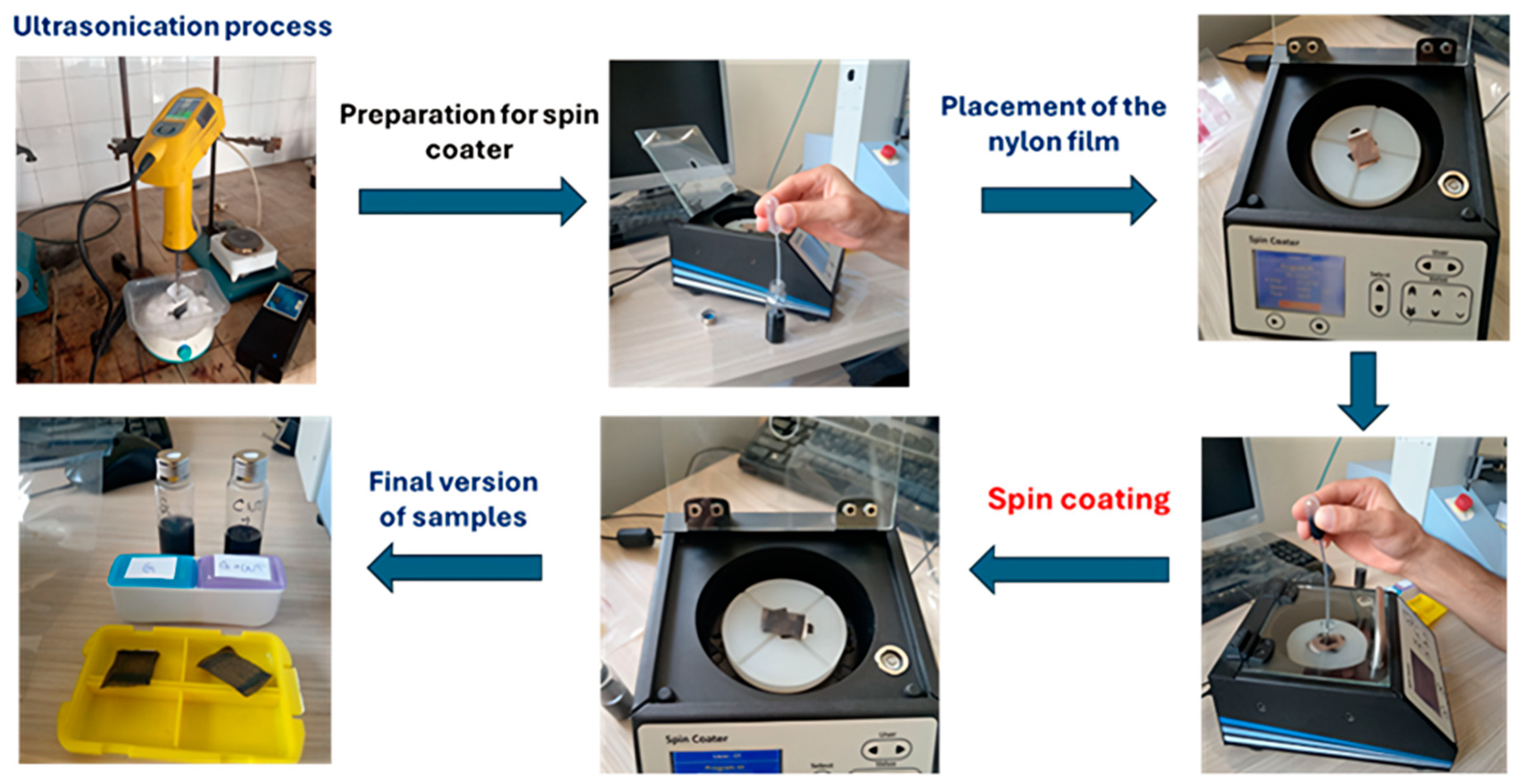
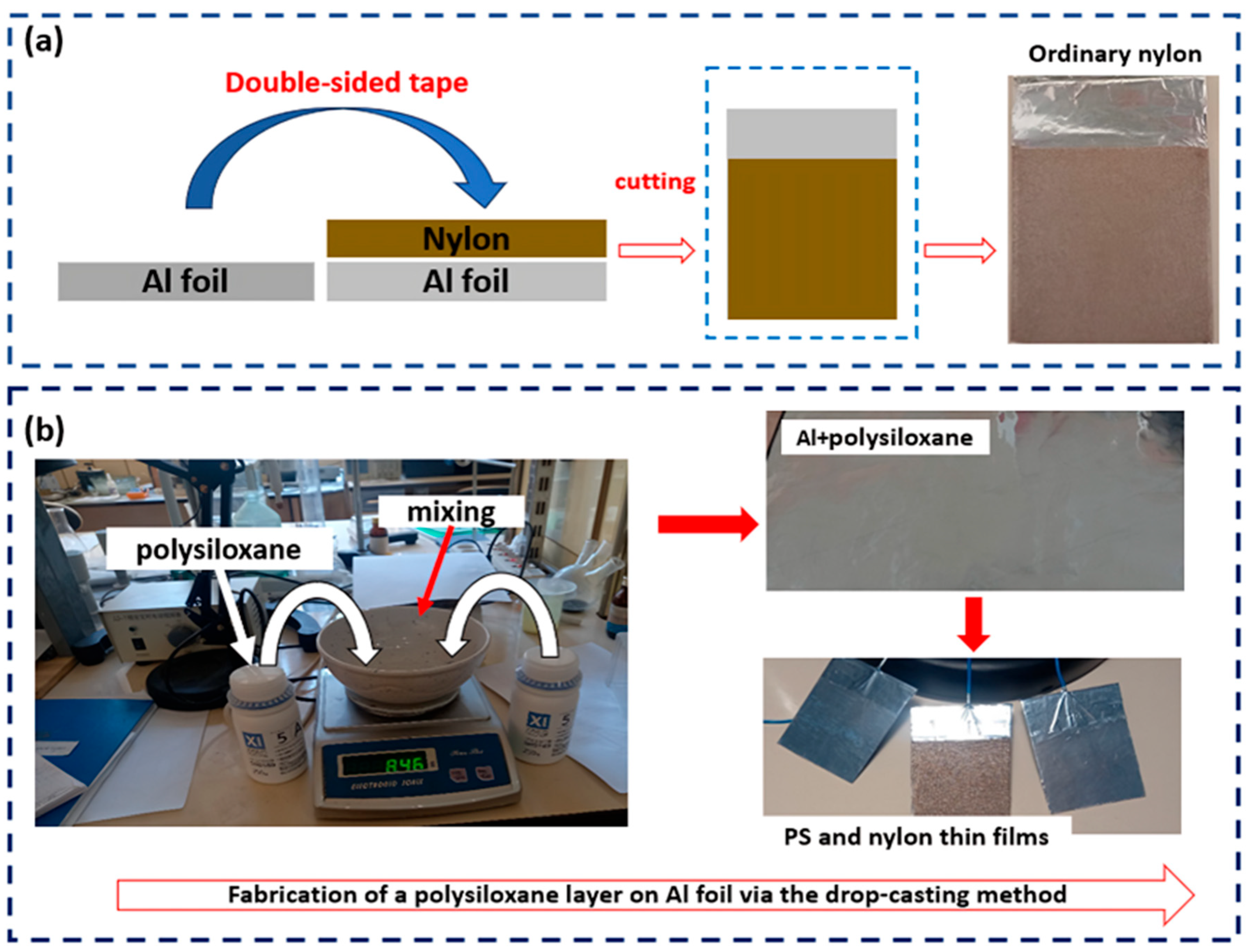
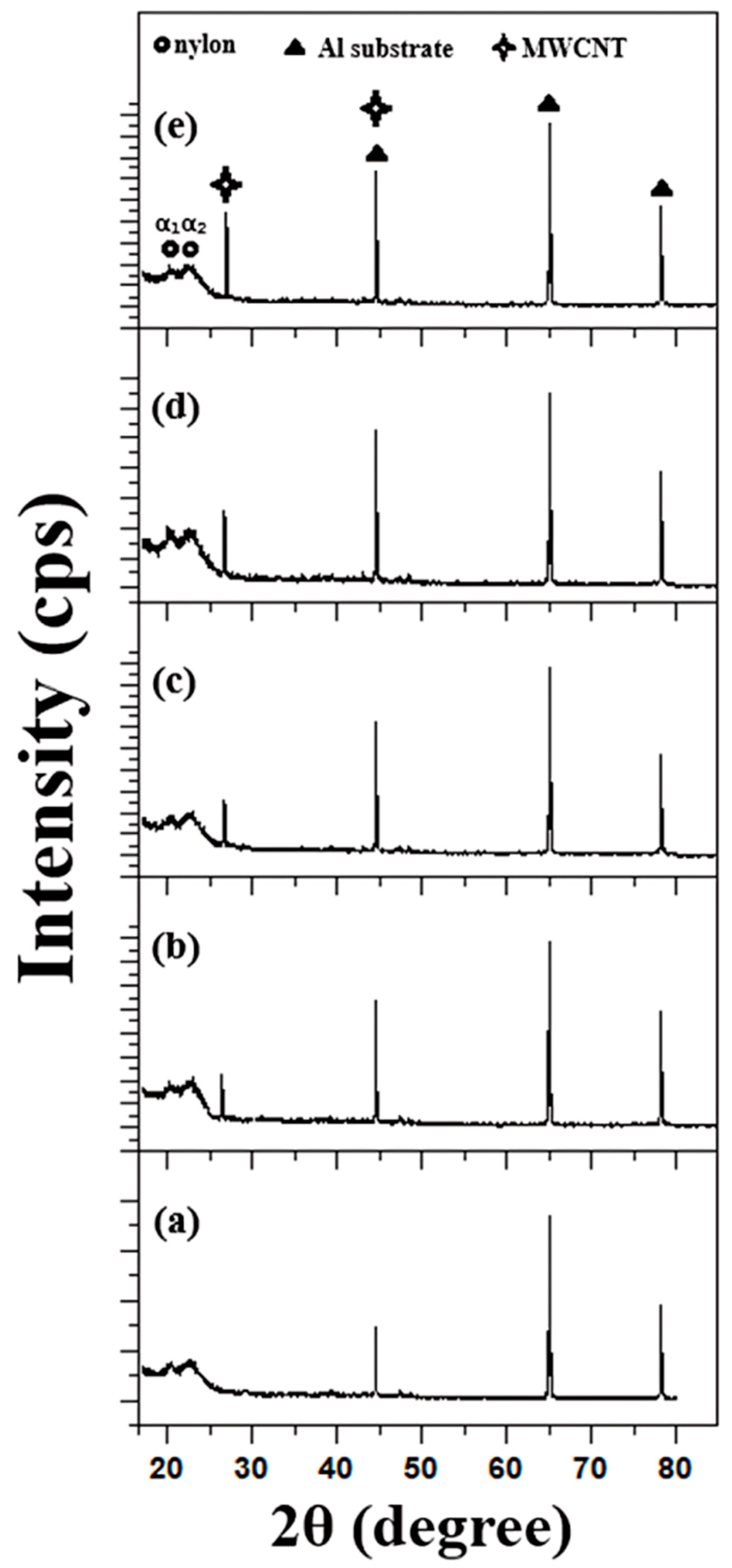
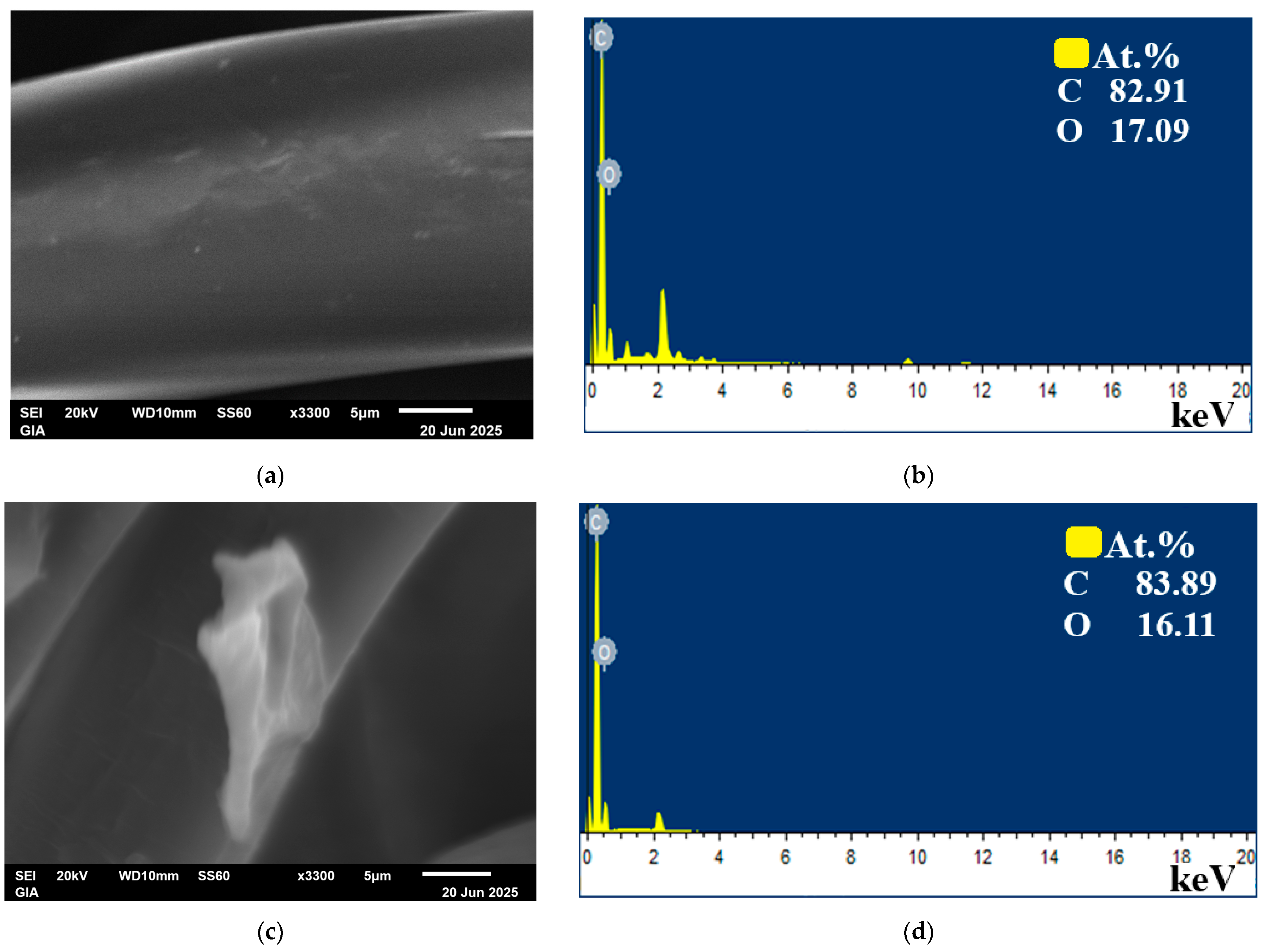

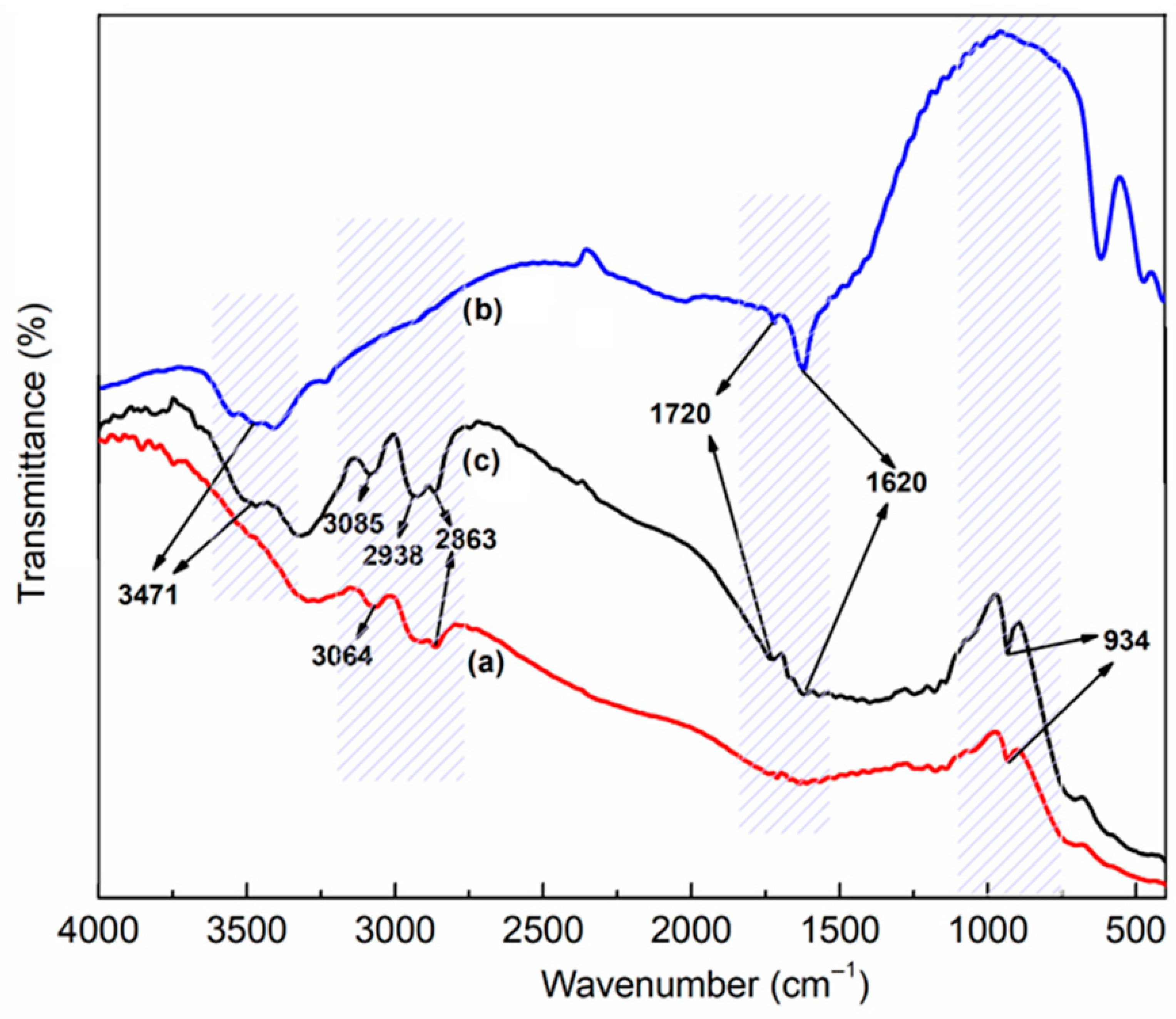
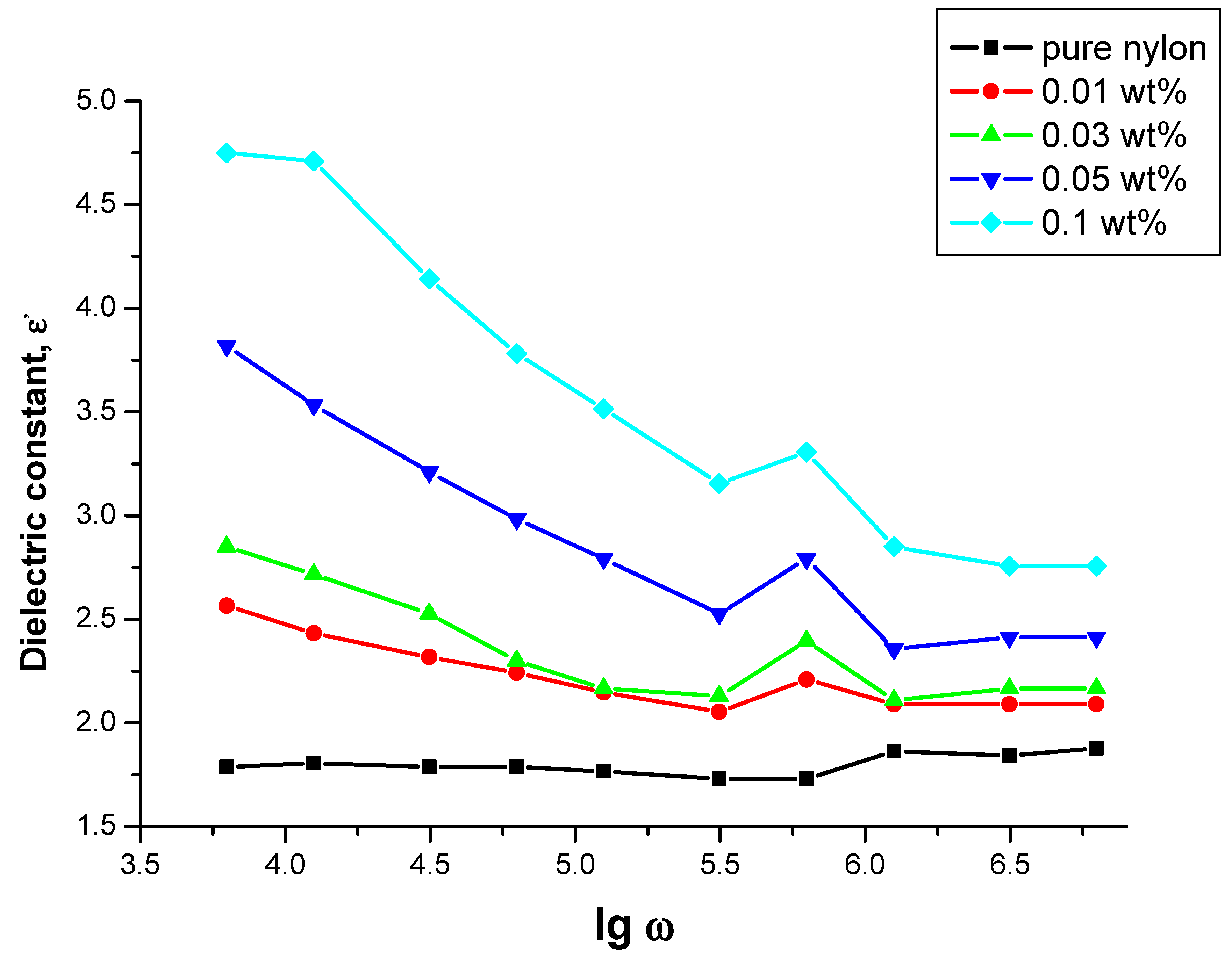


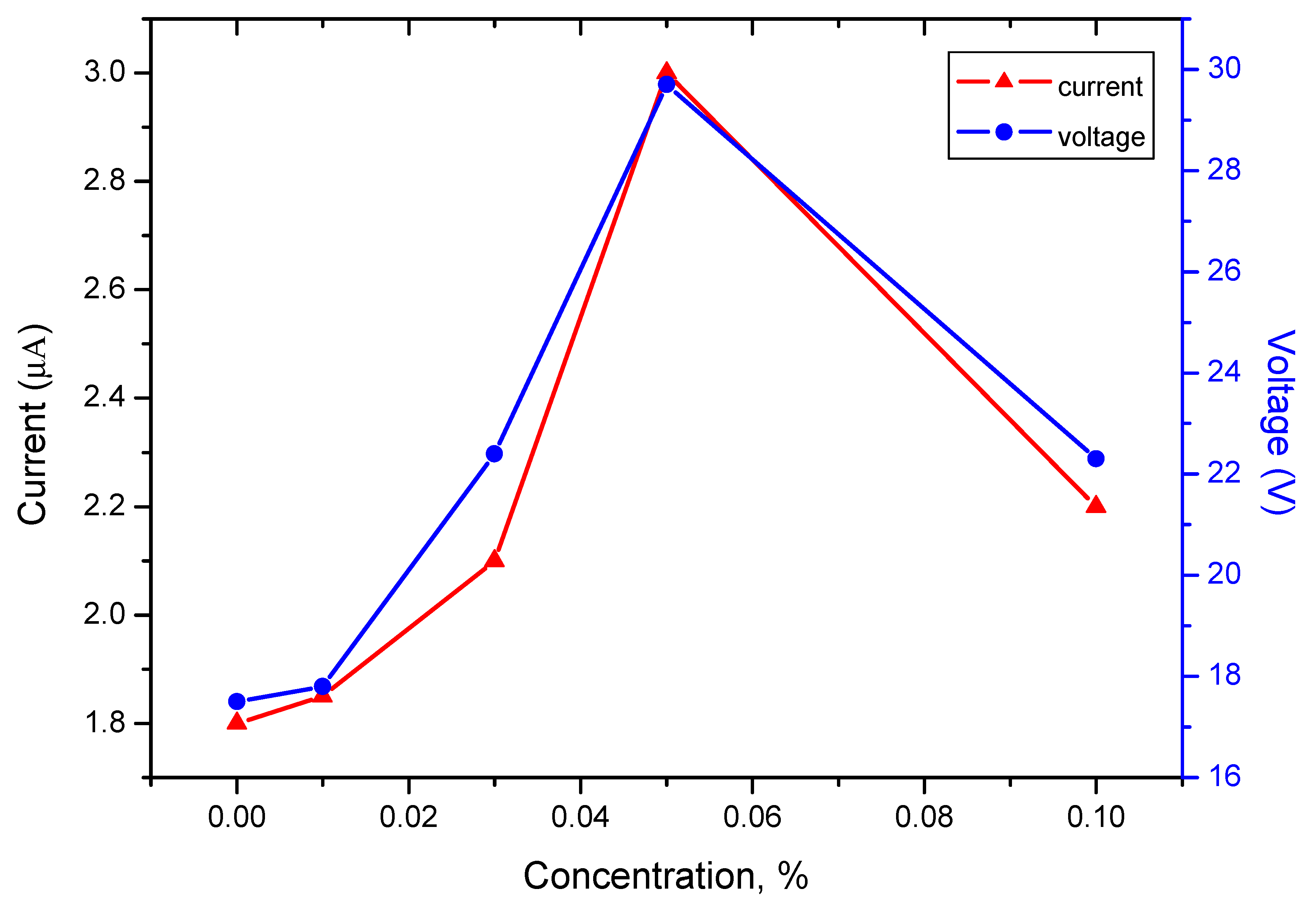
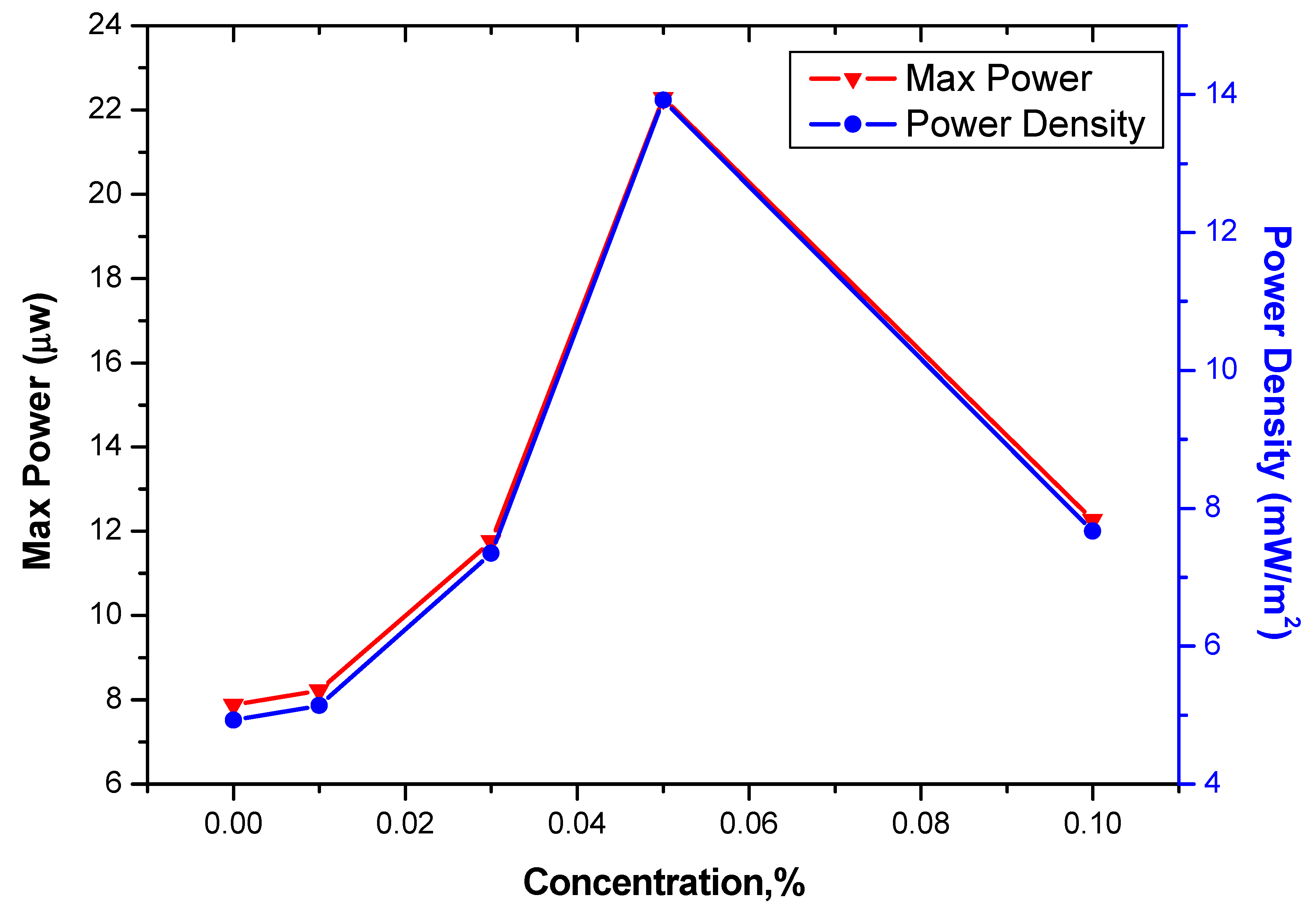
| Materials | Output (Voc/Isc) | Power/Power Density | Advantages | Limitations | Reference |
|---|---|---|---|---|---|
| SWCNTs, PI, PDMS | 170 nA | - | High sensitivity, flexible design, self-powered, simple fabrication | Limited resolution, durability, scalability issues | [33] |
| SWCNTs, MWCNTs, PDMS, Ag NWs | 760 V, 51 µA | 19.2 mW 0.77 mW/cm2 | High output, charge retention, simple fabrication, wearable design | Durability, scalability | [34] |
| MWCNTs, Silk fibroin, PET/ITO | 184 V, 6.13 µA | 317.4 μW/cm2 | Durable, flexible, and straightforward | Environmental durability, long-term stability | [35] |
| MWCNTs, PDMS, Kapton | 6.6 V, 25.7 µA | 1.98 mW 3.29 W/m2 | Enhanced output, flexible design | Durability untested, stability unknown | [36] |
| MWCNTs, PDMS, Ag | 435 V | 3.7 mW/cm2 | High output, flexible, hydrophobic | Stability issues, scalability, no storage integration | [37] |
| PAN, MWCNTs, Al, PET | 24 V | 48 mW/m2 | Improved power density, enhanced charge mobility, wearable sensing potential | Limited environmental stability, scale-up complexity, lacks storage integration | [38] |
| PDMS, MWCNTs, Al, PET | 249 V, 28.03 µA | 2.81 W/m2 | High output, flexible design, haptic potential | Limited durability, scalability issues, no energy storage | [39] |
| Nylon, MWCNT, Polysiloxane | 29.7 V, 3.0 μA | 13.9 mW/m2 | High dielectric permittivity, good dispersion, easy processing | Agglomeration at >0.05 wt% reduces performance | This work |
Disclaimer/Publisher’s Note: The statements, opinions and data contained in all publications are solely those of the individual author(s) and contributor(s) and not of MDPI and/or the editor(s). MDPI and/or the editor(s) disclaim responsibility for any injury to people or property resulting from any ideas, methods, instructions or products referred to in the content. |
© 2025 by the authors. Licensee MDPI, Basel, Switzerland. This article is an open access article distributed under the terms and conditions of the Creative Commons Attribution (CC BY) license (https://creativecommons.org/licenses/by/4.0/).
Share and Cite
Tene, T.; Gulahmadov, O.; Gahramanli, L.; Muradov, M.; Gilev, J.B.; Hamzayeva, T.; Bayramova, S.; Bellucci, S.; Vacacela Gomez, C. Influence of MWCNT Concentration on Performance of Nylon/MWCNT Nanocomposite-Based Triboelectric Nanogenerators Fabricated via Spin Coating Method. Nanoenergy Adv. 2025, 5, 9. https://doi.org/10.3390/nanoenergyadv5030009
Tene T, Gulahmadov O, Gahramanli L, Muradov M, Gilev JB, Hamzayeva T, Bayramova S, Bellucci S, Vacacela Gomez C. Influence of MWCNT Concentration on Performance of Nylon/MWCNT Nanocomposite-Based Triboelectric Nanogenerators Fabricated via Spin Coating Method. Nanoenergy Advances. 2025; 5(3):9. https://doi.org/10.3390/nanoenergyadv5030009
Chicago/Turabian StyleTene, Talia, Orkhan Gulahmadov, Lala Gahramanli, Mustafa Muradov, Jadranka Blazhevska Gilev, Telli Hamzayeva, Shafag Bayramova, Stefano Bellucci, and Cristian Vacacela Gomez. 2025. "Influence of MWCNT Concentration on Performance of Nylon/MWCNT Nanocomposite-Based Triboelectric Nanogenerators Fabricated via Spin Coating Method" Nanoenergy Advances 5, no. 3: 9. https://doi.org/10.3390/nanoenergyadv5030009
APA StyleTene, T., Gulahmadov, O., Gahramanli, L., Muradov, M., Gilev, J. B., Hamzayeva, T., Bayramova, S., Bellucci, S., & Vacacela Gomez, C. (2025). Influence of MWCNT Concentration on Performance of Nylon/MWCNT Nanocomposite-Based Triboelectric Nanogenerators Fabricated via Spin Coating Method. Nanoenergy Advances, 5(3), 9. https://doi.org/10.3390/nanoenergyadv5030009








